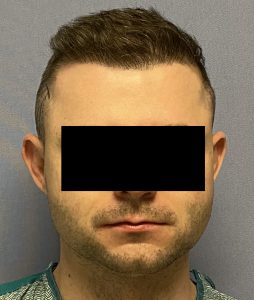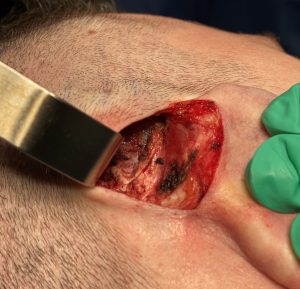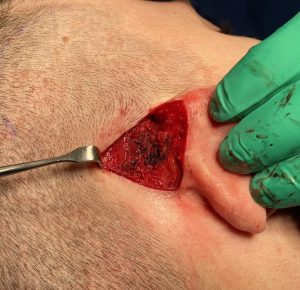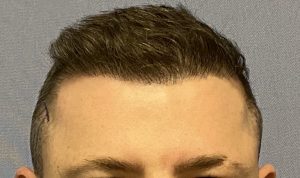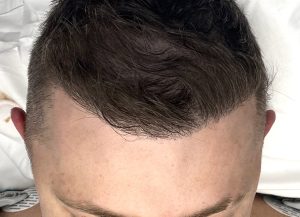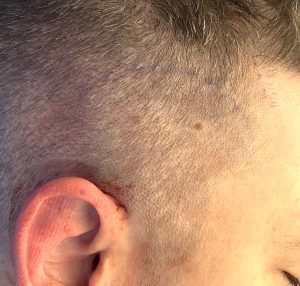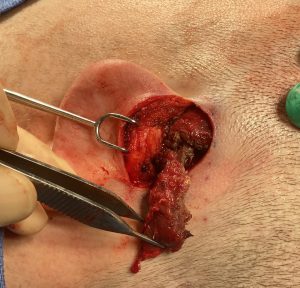Background: The temporal muscle has a significant functional and aesthetic role to the entire side of the head. Its size influences the contour of the entire side of the head from the lateral orbital wall all the way to the parietal bone on the back of the head. It is one of the muscles that assists in the opening and closing of the lower jaw. To some degree the two are related…the stronger the muscle is in size and function affects how big it appears along the side of the head. The thicker/bigger the muscle is the increased convexity that can develop on the side of the head.
Men that have unaesthetic side of the head fullness, in which the temporal muscle is a significant cause, usually do not have any functional headache symptoms. They widely open their mouth and, as would be expected due to lengthening of the temporal muscle, their side of head contour improves as the thickness of the muscle becomes less. But a small subset of such patients do have headache symptoms in which the foci of the pain can be localized to the bulge of the muscle when they clench their teeth. This pinpoint location of the headache pain confirms that excessive temporal muscle contraction/tightness is the cause.
The treatment of both excessive temporal muscle thickness and temporal headaches can be done non-surgically with neuromuscular modulator injections. Botox is the most recognized injection drug and can have some positive benefits both in muscle size and headache reduction. But because of the size of the temporal muscle and its large surface area coverage it takes very high unit doses to create some benefits with similarly high costs to do so. While partially effective it is also not permanent with most patients achieving reductive effects of a few months in duration.

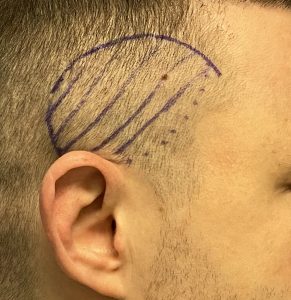
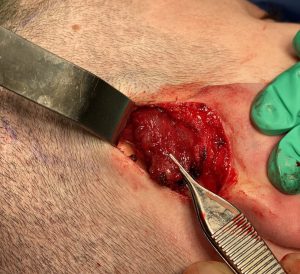
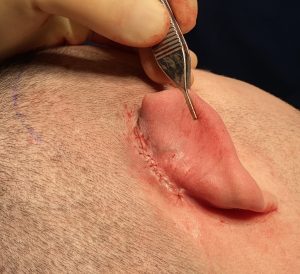
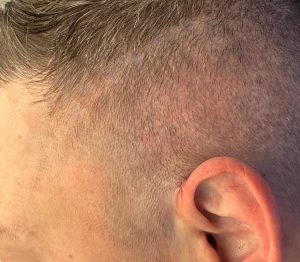

Case Highlights:
1) Temporal muscle hypertrophy can cause unaesthetic side of the head bulges as well as refractory temporal headaches/pain.
2) Botox injections can decrease enlarged temporal muscles but the doses to do so are substantial, have a partial size and symptom reduction effect and is not permanent.
3) Temporal muscle reductions/transpositions done through postauricular incisions can improve the contour of the side of the head and can reduce the severity of the headaches.
Dr. Barry Eppley
Indianapolis, Indiana




